Top 10 Most Luxurious and Expensive Helicopters In The World
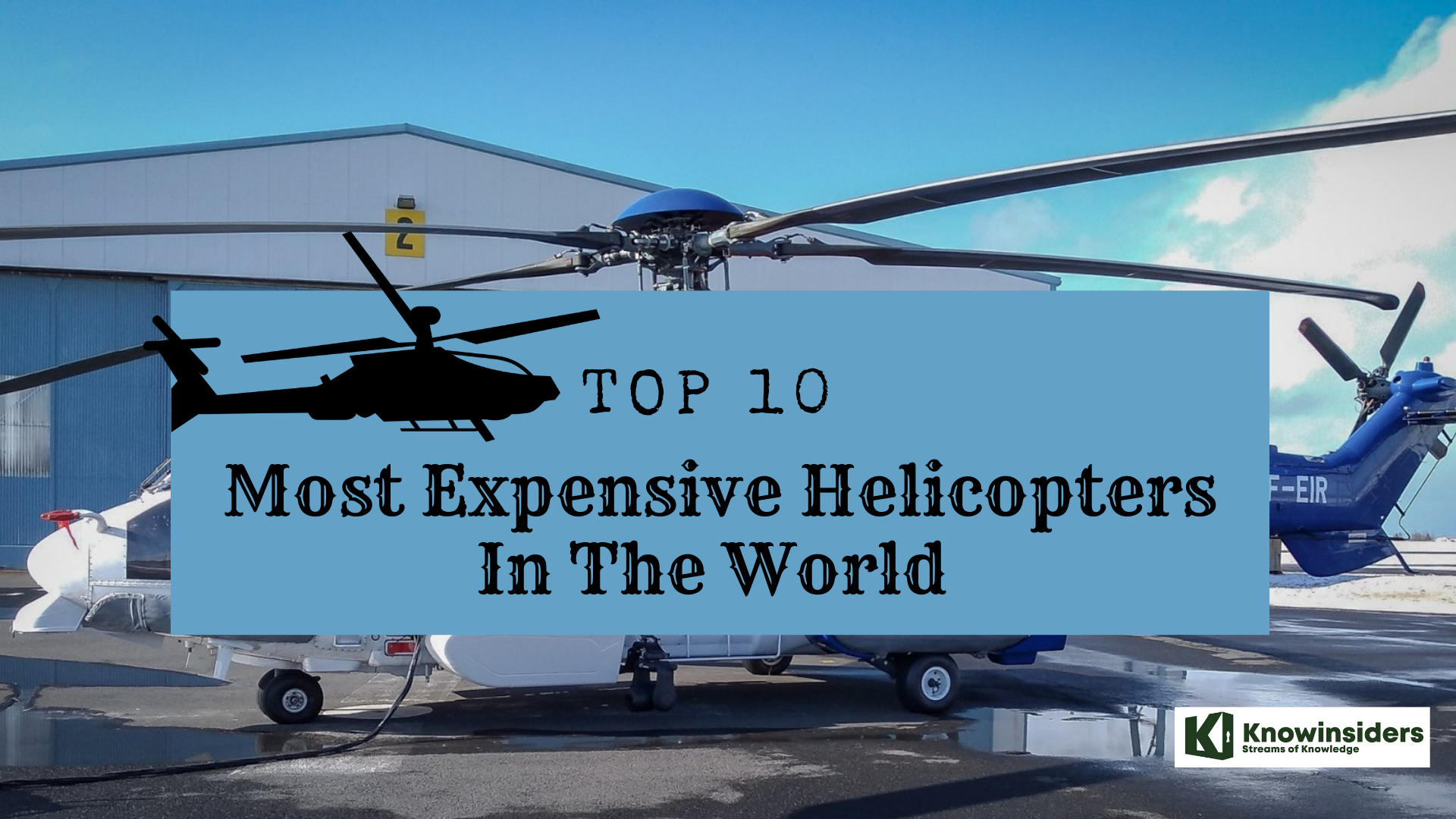 |
| Top 10 most expensive helicopters in the world |
Most people have heard of personal and charter jets, but luxury helicopters are the genuine gems. Not only are these aircraft comparatively less expensive, but helicopters can approach places that bulky jets can’t. Having a private or commercial helicopter is expedient, more environment friendly, and a symbol of status. Celebrities including Brad Pitt and Angelina Jolie and Donald Trump own a luxury helicopter, and this slot market has grown considerably in recent years due to demand from the rich.
They are well-appointed with all the newest technology, and interior seating marks that are designed in fine Italian leather upholstery.
These are top 10 most luxurious and expensive helicopters in the world
The list of top 10 most luxurious helicopters in the world
10. AgustaWestland AW109 ($6.3 Million)
9. Eurocopter EC175 ($7.9 Million)
8. Airbus Helicopters H155 ($10 Million)
7. AgustaWestland AW139 ($12 Million)
6. Sikorsky S-76C ($13 Million)
5. Bell 525 Relentless ($15 million)
4. Airbus AS332 L1e VIP Super Puma ($15.5 million)
3. Sikorsky S-92 ($17.7 Million)
2. AgustaWestland AW101 ($21 Million)
1. Airbus H225 Super Puma ($27 million)
What are the most luxurious and expensive helicopters in the world?
10. AgustaWestland AW109
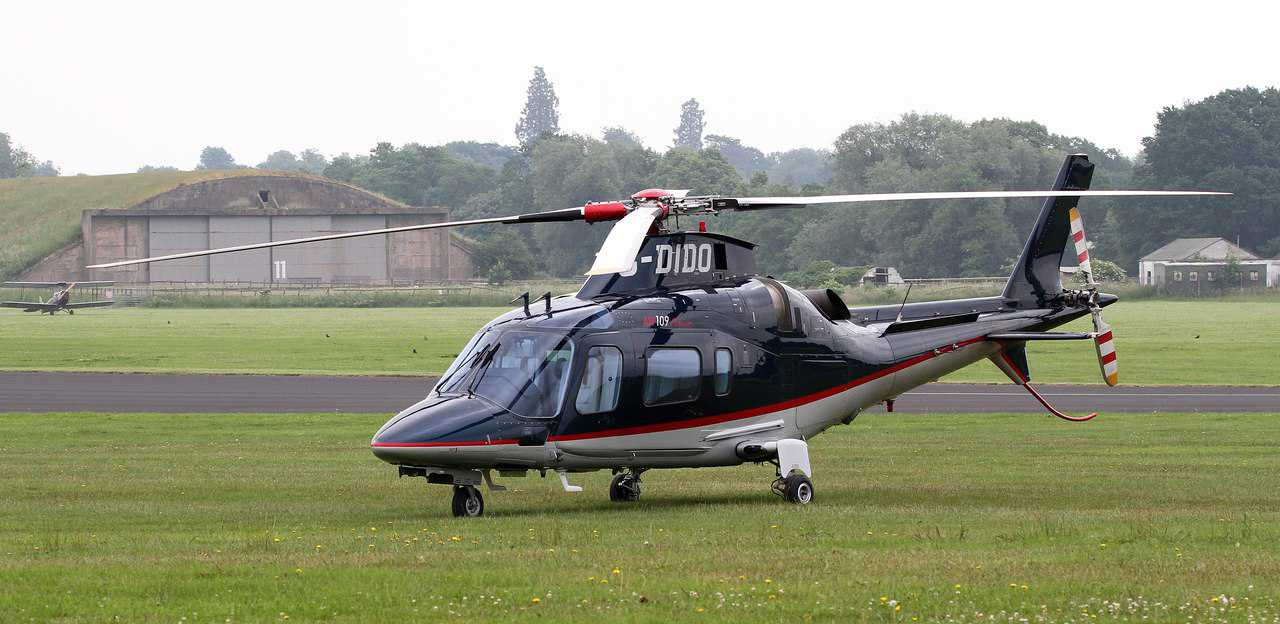 |
| Photo: Aero Corner |
The AgustaWestland AW109, originally the Agusta A109 is a lightweight, twin-engine, eight-seat multi-purpose helicopter built by the Italian manufacturer Leonardo S.p.A. (formerly AgustaWestland, merged into the new Finmeccanica since 2016). It was the first all-Italian helicopter to be mass-produced.
Developed as the A109 by Agusta, it originally entered service in 1976 and has since been used in various roles, including light transport, medevac, search-and-rescue, and military roles. The AW109 has been in continuous production for 40 years. The AgustaWestland AW119 is a derivative of the AW109 series with the main difference being that it is powered only by a single engine.
According to AgustaWestland, the AW109 Power features various advanced avionics systems, these include a three-axis autopilot, an auto-coupled Instrument Landing System, integrated GPS, a Moving Map Display, weather radar, and a Traffic Alerting System. These systems are designed to reduce pilot workload (the AW109 can be flown under single or dual-pilot instrument flight rules (IFR)) and enable the use of night vision goggles (NVG) to conduct day-or-night operations. The AW109 has a forced trim system which can be readily and selectively activated by the controlling pilot using triggers located on the cyclic and collective which hold the control inputs at the last set position if activated. All critical systems are deliberately redundant for fail-safe operations; the hydraulic system, hydraulic actuators, and electrical system are all dual-redundant, while the power inverters are triple-redundant. The AW109 also has reduced maintenance requirements due to an emphasis on reliability across the range of components used.
9. Eurocopter EC175
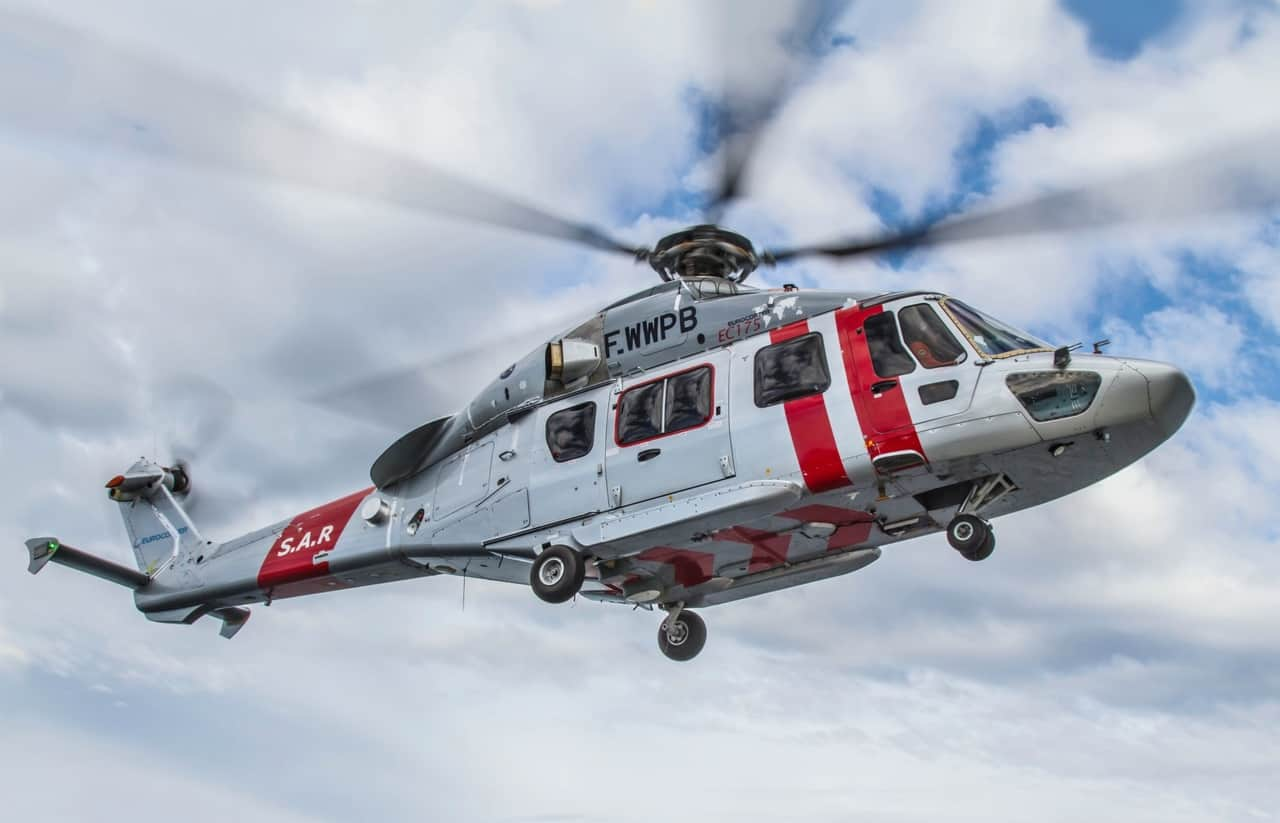 |
| Photo: Aero Corner |
The Airbus Helicopters H175 is a 7-ton class medium utility helicopter produced by Airbus Helicopters (formerly Eurocopter Group). In China, the H175 is produced by the Aviation Industry Corporation of China (AVIC) as the Avicopter AC352. Originally launched as the Eurocopter EC175 and the Harbin Z-15, it has been referred to as being a 'super-medium' helicopter.
Formally launched at Heli-Expo in Houston on 24 February 2008, it was predicted by Airbus Helicopters that approximately 800 to 1,000 EC175s would be sold over an initial 20-year period. It entered service in December 2014; in 2015, the EC175 was formally renamed to the H175, in line with Eurocopter's corporate rebranding as Airbus Helicopters.
The H175 is built for civilian and parapublic applications, its primary markets being support of the oil and gas industry and search and rescue missions. Other applicable roles include parapublic operations, homeland security, air medical services, utility missions and corporate transportation. The EC175 is offered with multiple interior seating configurations, housing up to 18 passengers in an oil and gas transport configuration, 9-12 passengers in an executive layout, and 6-8 in a VIP configuration It is fitted with wide sliding doors for ease of access and oversized jettisonable windows for emergency egress. The H175 has a flat floor without any partition between the cockpit and the cabin area, which enables various flexible layouts to be adopted. Either auxiliary fuel tanks or a storage area can be installed beneath the cabin floor, which can be accessed internally; a large luggage compartment externally accessible from either side is present in some configurations.
8. Airbus Helicopters H155
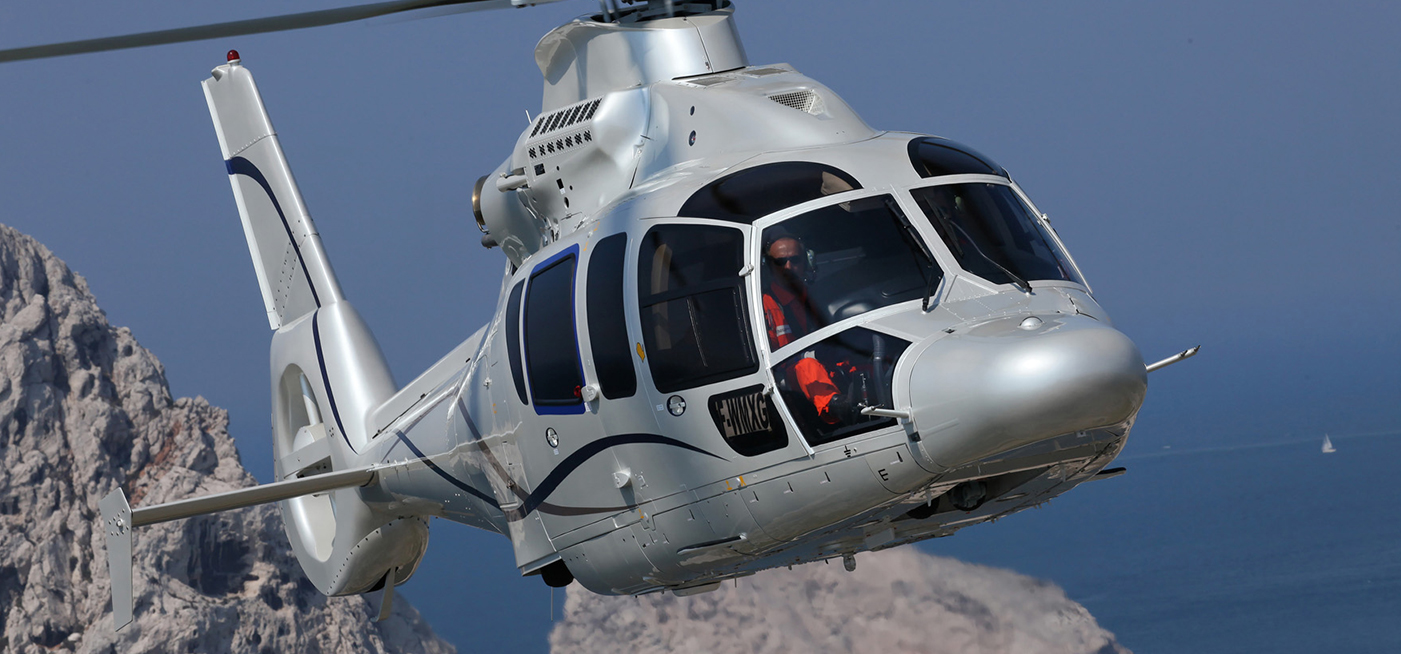 |
| Photo: Airbus Helicopters Canada |
The H155 belongs to the renowned Dauphin family and benefits from Airbus’ advanced rotor technology, providing the lowest vibration and sound signature in its class.
This helicopter’s Spheriflex® main rotor head delivers a smooth ride – even at high speed – along with excellent handling qualities and in-flight stability.
Thanks to the shrouded Fenestron® tail rotor, the H155 benefits from a low sound signature and low maintenance. The shrouded rotor concept delivers additional yaw control while increasing safety during ground operations, especially in confined areas.
The H155 is equipped with two Safran Arriel 2C2 turbine engines fitted with dual channel full authority digital engine controls (FADEC) for fully automated one engine inoperative (OEI) safety. Thanks to its significant power, the H155 has a long flight range as well as the fastest cruising speed in its class.
Durability and mission capability are guaranteed by the H155’s airframe components made of highly resistant, corrosion-proof composite materials and light alloys.
The H155 offers a full-glass cockpit with large liquid crystal display (LCD) screens, which reduce pilot workload, improve safety, and facilitate maintenance. Two Garmin GTN 750 touchscreens are installed in the centre console, enhancing situational awareness and connectivity.
7. AgustaWestland AW139
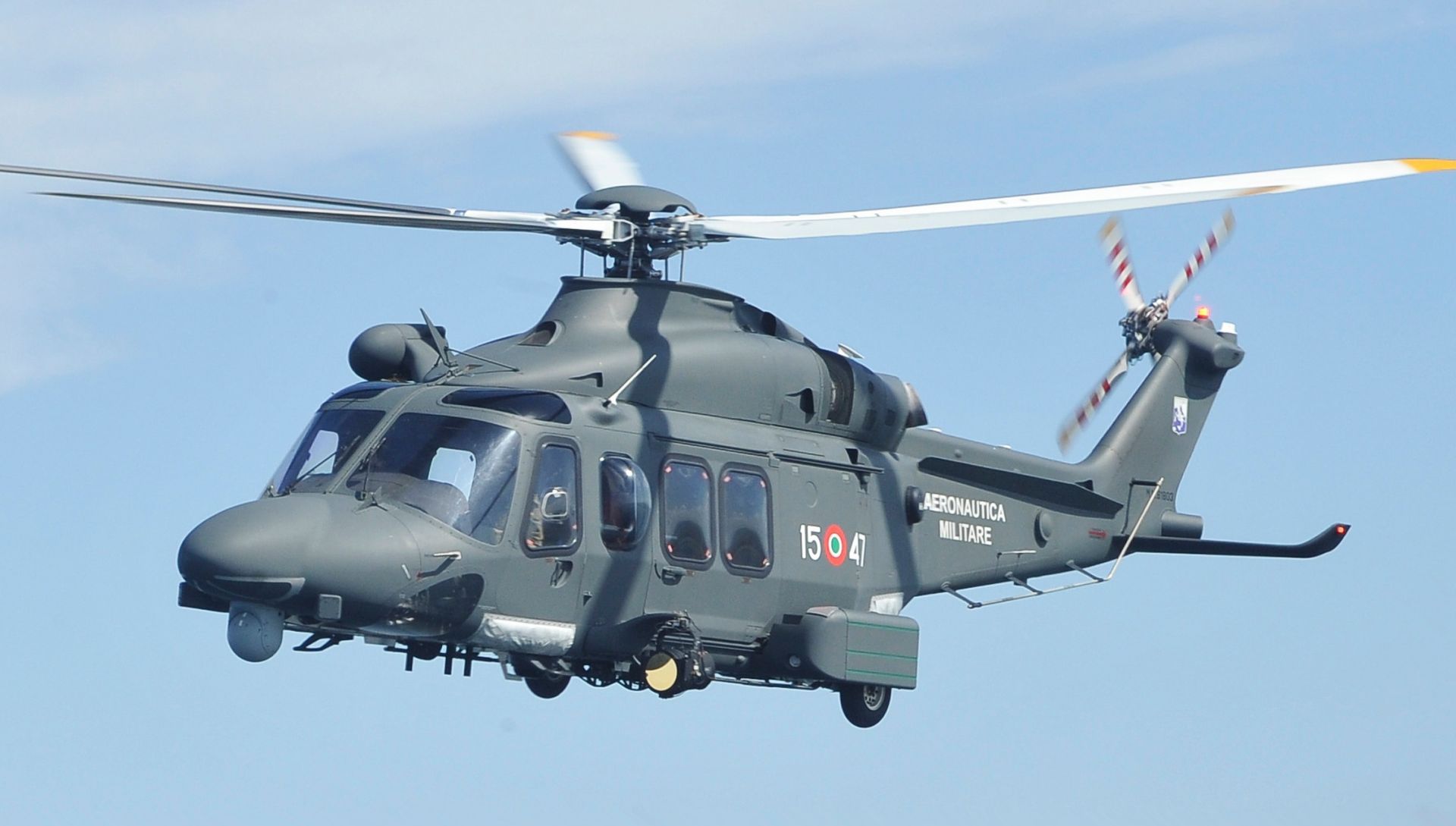 |
| Photo: Wikipedia |
The AgustaWestland AW139 boasts the best speed, ride quality, quietness, and passenger cabin space in its class. Active noise-cancellation headphones are provided for extra comfort.
Three seating configurations are available: 7 seats (with VIP armchair seating), and 12 and 15 seat configurations for larger groups. An additional 3.4 m3 (120 ft3) baggage space is accessible from the outside of the helicopter.
With a tiny landing radius of just 100 feet, our helicopters can take you to the most confined and remote corners of North America. Certified Category "A" (Class 1) performance assures operations in all environments, conditions, and loads.
6. Sikorsky S-76C
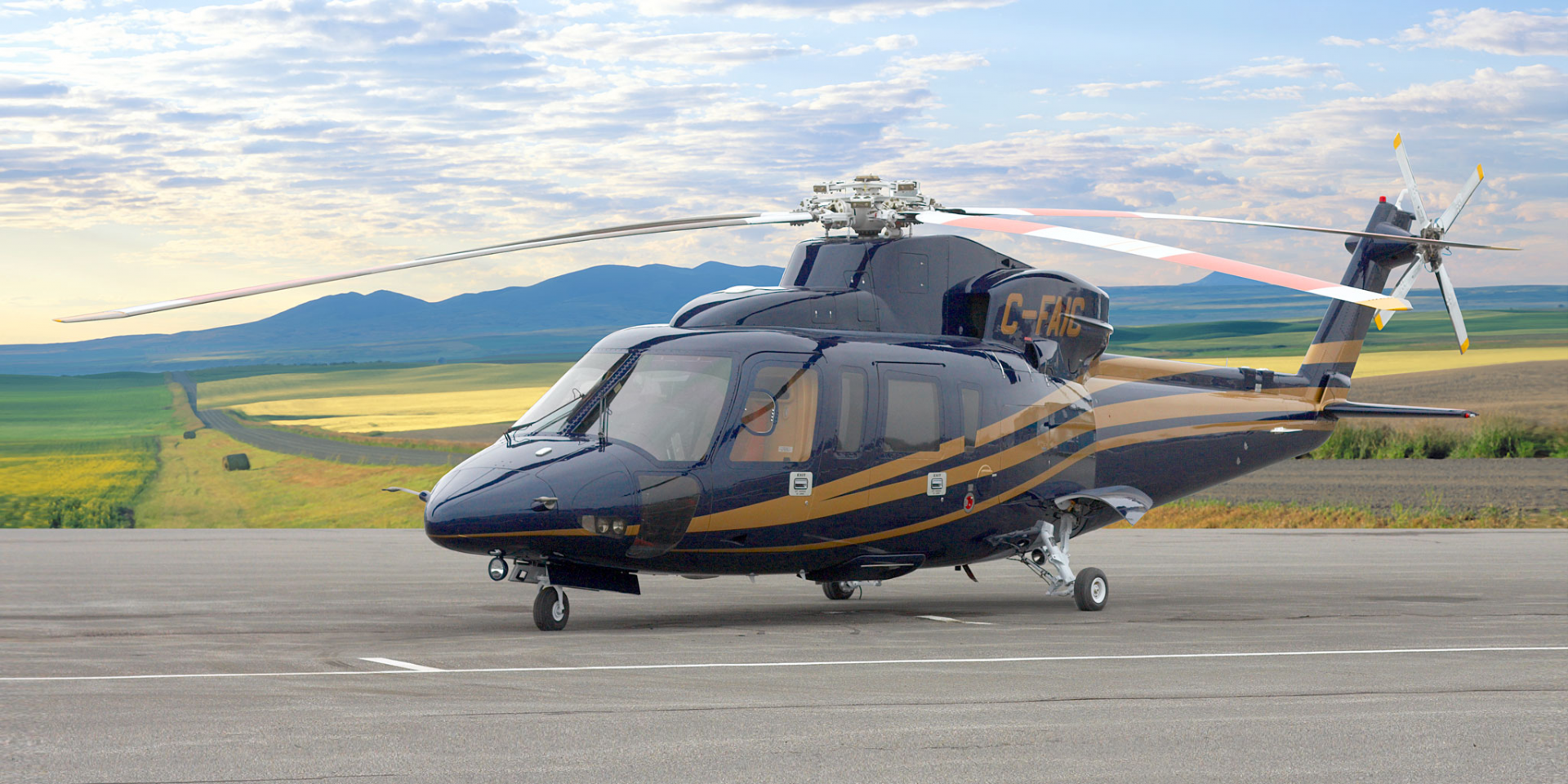 |
| Photo: Business Jet Traveler |
Sikorsky S-76 is a multi-role, medium-size utility helicopter manufactured by Sikorsky Aircraft, a subsidiary of Sikorsky Aircraft. It was principally designed and developed for CHC Helicopter Corporation, Canada. The maiden flight of S-76 took place on 13 March 1977. More than 800 S-76 helicopters have been delivered to various operators worldwide.
Operations carried out by the S-76 include executive passenger transport (VIP), emergency medical services (EMS), search-and-rescue operations (SAR) and offshore passenger and material transportation. The S-76 can accommodate 14 people including two pilots. It has a retractable landing gear.
Sikorsky Aircraft Corporation received Federal Aviation Administration (FAA) certification for its S-76C++, a variant of the S-76, in January 2006.
In October 2012, the FAA issued the Type Certificate for S-76D helicopter, the newest variant of S-76. The first S-76D helicopter was delivered in the last quarter of 2013.
In April 2014, the Civil Aviation Administration of China (CAAC) issued a validation type certificate for the S-76D helicopter.
5. Bell 525 Relentless
 |
| Photo: Getty Images |
The Bell 525 Relentless is an American medium-lift helicopter, under development by Bell Textron. The Bell 525 was unveiled at the 2012 Heli-Expo in Dallas, Texas in February 2012. The helicopter first flew on 1 July 2015. It is designed to transport up to 19 passengers.
The Bell 525's maiden flight was planned for late 2014. PHI, Inc. was the launch customer for the type, but as of 2016 is no longer the launch customer. After a six-month delay, the Bell 525 prototype first flew in July 2015. At that time, Bell predicted certification to be completed by the end of 2017. The FAA suggested special rules in May 2016, to address the fly-by-wire concept.
The Bell 525 is designed to fit the emerging "Super-Medium" size category suited ideally to support offshore oil and gas operations. Half of the customers come from that sector. Helicopters under development in the same class are the Airbus Helicopters H175 and the AgustaWestland AW189. The 525 is to be certified in Category A Takeoff class, at maximum gross weight. This involves being able to continue a takeoff (or landing) after one of the helicopter's two turbine engines fails at any point. It should be capable of carrying 19 passengers, more than any existing super-medium helicopter. It is designed for two pilots with 16 passengers in the standard configuration and two pilots with 20 passengers in high-density seating.
4. Airbus AS332 L1e VIP Super Puma
 |
| Photo: Aero Corner |
The Airbus Helicopters H215 (formerly Eurocopter AS332 Super Puma) is a four-bladed, twin-engine, medium-size utility helicopter developed and marketed originally by Aérospatiale, later by Eurocopter and currently by Airbus Helicopters. It is a re-engined and more voluminous version of the original Aérospatiale SA 330 Puma. First flying in 1978, the Super Puma succeeded the SA 330 Puma as the main production model of the type in 1980. Since 1990, Super Pumas in military service have been marketed under the AS532 Cougar designation. In civilian service, a next generation successor to the AS 332 was introduced in 2004, the further-enlarged Eurocopter EC225 Super Puma.
A navalised variant of the Super Puma has also been manufactured for performing anti-submarine warfare and anti-surface warfare missions. In such a configuration, the Super Puma is modified with additional corrosion protection, a folding tail rotor boom, a deck-landing guidance system, sonar equipment, and the nose-mounted Omera search radar. For the anti-surface role, it can be armed with a pair of Exocet anti-ship missiles.
3. Sikorsky S-92
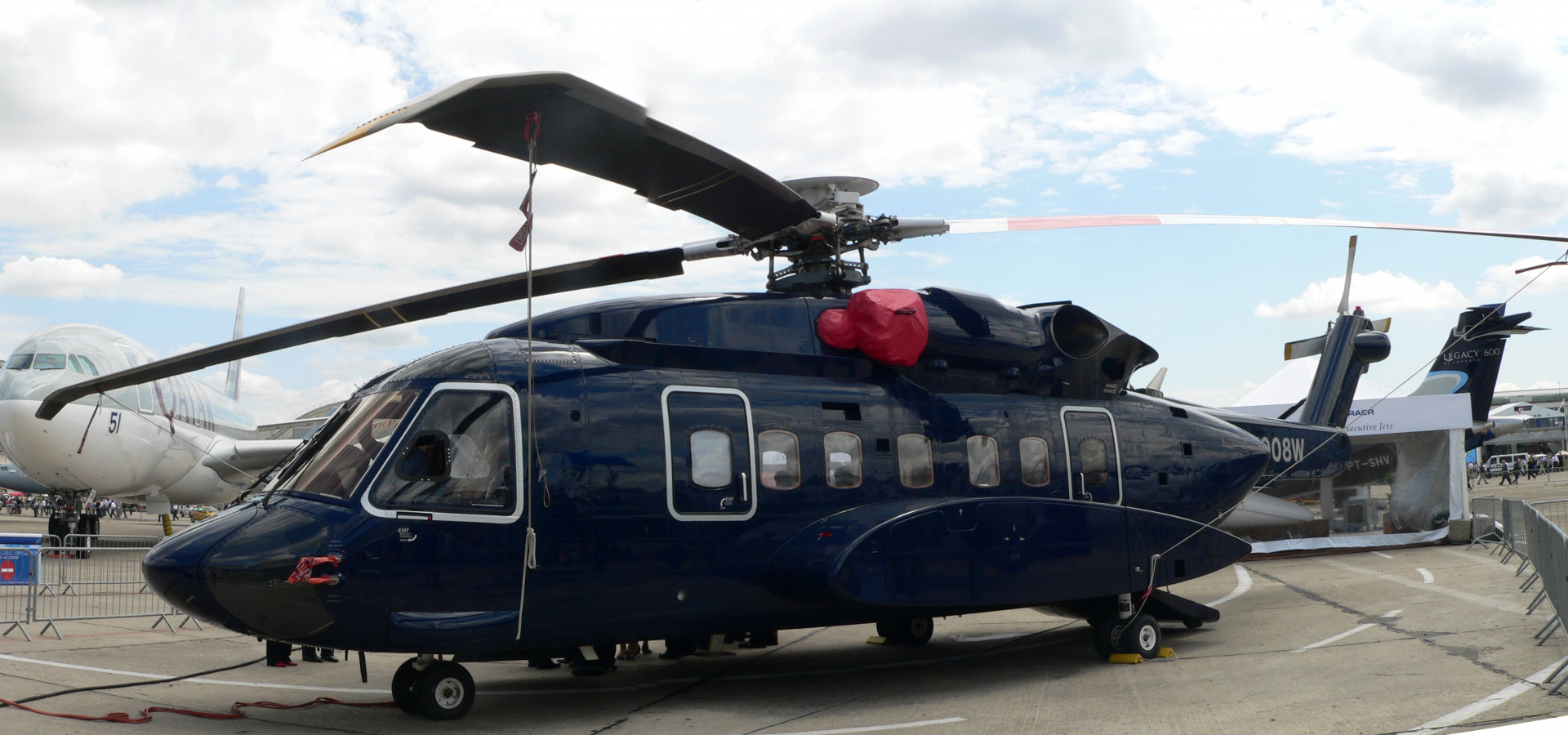 |
| Photo: Getty Images |
The Sikorsky S-92 is an American twin-engine medium-lift helicopter built by Sikorsky Aircraft for the civil and military helicopter markets. The S-92 was developed from the Sikorsky S-70 helicopter and has similar parts such as flight control and rotor systems.
The H-92 Superhawk is a military version of the S-92 in the utility transport role, capable of carrying 22 troops. The H-92 can also be configured for specific missions, including search and rescue and executive transportation. The CH-148 Cyclone is a shipboard maritime helicopter variant developed for the Royal Canadian Air Force to support naval operations of the Royal Canadian Navy. The Sikorsky VH-92 is a variant under development to replace the United States Marine Corps' Marine One U.S. Presidential transport fleet.
2. AgustaWestland AW101
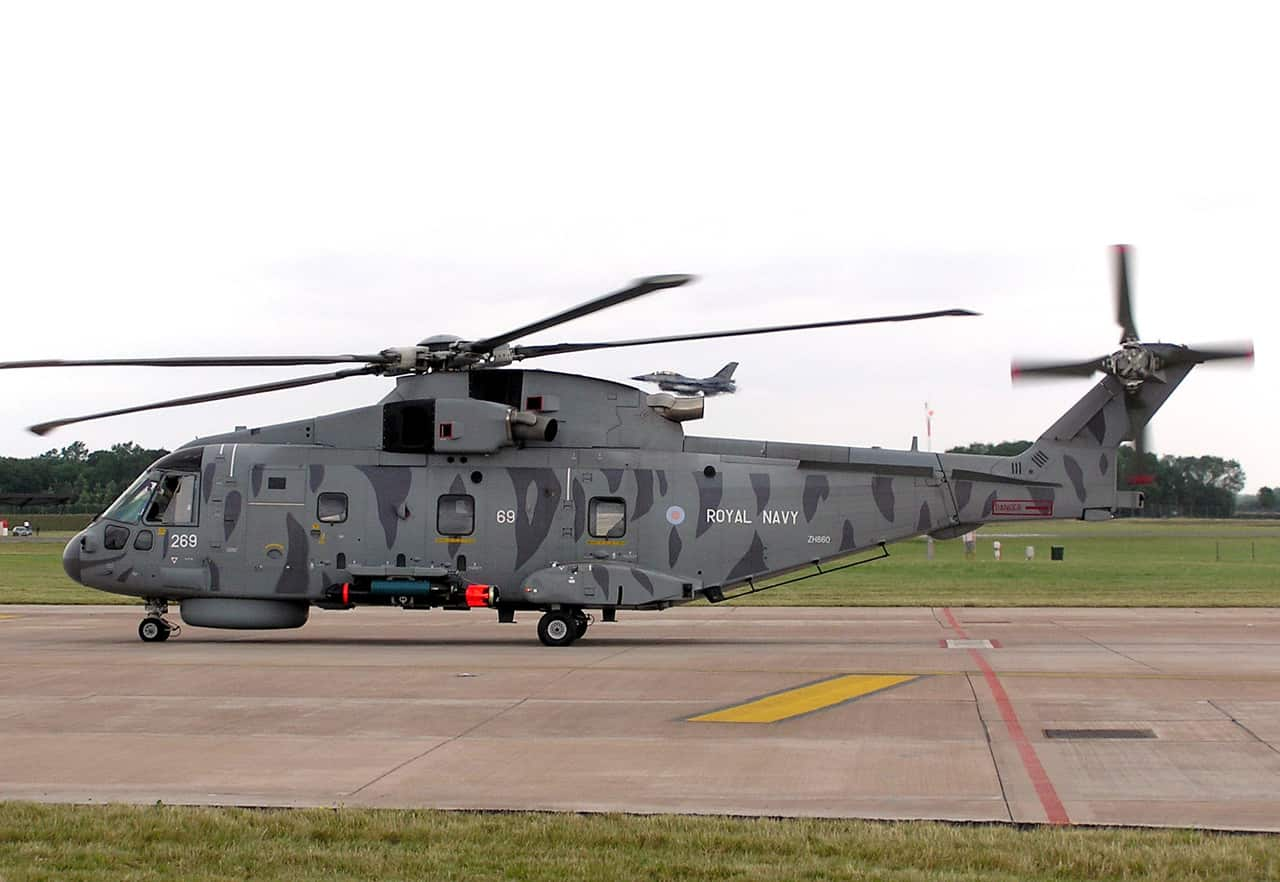 |
| Photo: Aero Corner |
The AgustaWestland AW101 is a medium-lift helicopter in military and civil use. First flown in 1987, it was developed by a joint venture between Westland Helicopters in the United Kingdom and Agusta in Italy in response to national requirements for a modern naval utility helicopter. Several operators, including the armed forces of Britain, Denmark, and Portugal, use the name Merlin for their AW101 aircraft. It is manufactured at factories in Yeovil, England and Vergiate, Italy; licensed assembly work has also taken place in Japan and the United States.
Prior to 2007, the aircraft had been marketed under the designation EH101. The original designation was EHI 01, from the name given to the Anglo-Italian joint venture – European Helicopter Industries – but a transcription error changed this to EH101. In 2000, Westland Helicopters and Agusta merged to form AgustaWestland, leading to the type's current designation.
The AW101 entered into service in 1999 and has since replaced several older helicopter types, such as the Sikorsky Sea King, performing roles such as medium-sized transport, anti-submarine warfare, search and rescue, and ship-based utility operations. The Royal Canadian Air Force (RCAF) operates the CH-149 Cormorant variant for air-sea rescue. Another variant, the Lockheed Martin VH-71 Kestrel, was produced to serve in the US presidential transport fleet before the program was cancelled and the aircraft sold off. Civil operators use the AW101 for passenger and VIP transportation. The type has been deployed to active combat theatres, such as in support of coalition forces during the Iraq War and the War in Afghanistan.
1. Airbus H225 Super Puma
 |
| Photo: Airbus |
The Airbus Helicopters H225 (previously Eurocopter EC225 Super Puma) is a long-range passenger transport helicopter developed by Eurocopter as the next generation of the civilian Super Puma family. It is a twin-engined aircraft and can carry up to 24 passengers along with two crew and a cabin attendant, dependent on customer configuration. The helicopter is marketed for offshore support and VIP passenger transport duties, as well as public service missions.
The civil-orientated EC225 has a military counterpart, which was originally designated as the Eurocopter EC725; it was rebranded in 2015 as the H225M. In 2015, the EC225 was formally renamed to the H225, in line with Eurocopter's corporate rebranding as Airbus Helicopters.
The helicopter is powered by two Turbomeca Makila 2A1 turboshaft engines mounted over the cabin; these engines are capable of providing 14 per cent more engine power and feature a redundant dual-channel full authority digital engine control (FADEC) system for high reliability, a further backup system is present in the event of both FADEC systems failing. The FADEC system ensures that engine power is always kept within the limits of the gearbox. Many of the mechanical components, particularly of the engines, were designed to be modular to ease maintenance, and composite materials were used where possible to reduce the aircraft's weight.
 Top 10 Useless and Ridiculously Expensive Things In The World Top 10 Useless and Ridiculously Expensive Things In The World You get what you pay for but sometimes you pay too high for useless things. Check out top 10 useless and ridiculous expensive things in ... |
 Top 10 Most Expensive Mobilephones In the World 2021/2022 Top 10 Most Expensive Mobilephones In the World 2021/2022 Mobilephones are not just about use, it's also about owning a luxurious looking phone and showing it off to other people. Take a look at ... |
 Top 10 Most Luxurious and Expensive Casinos In The World Top 10 Most Luxurious and Expensive Casinos In The World Curious to know what casinos are the most luxurious and expensive in the world? Read on to know the answer. |
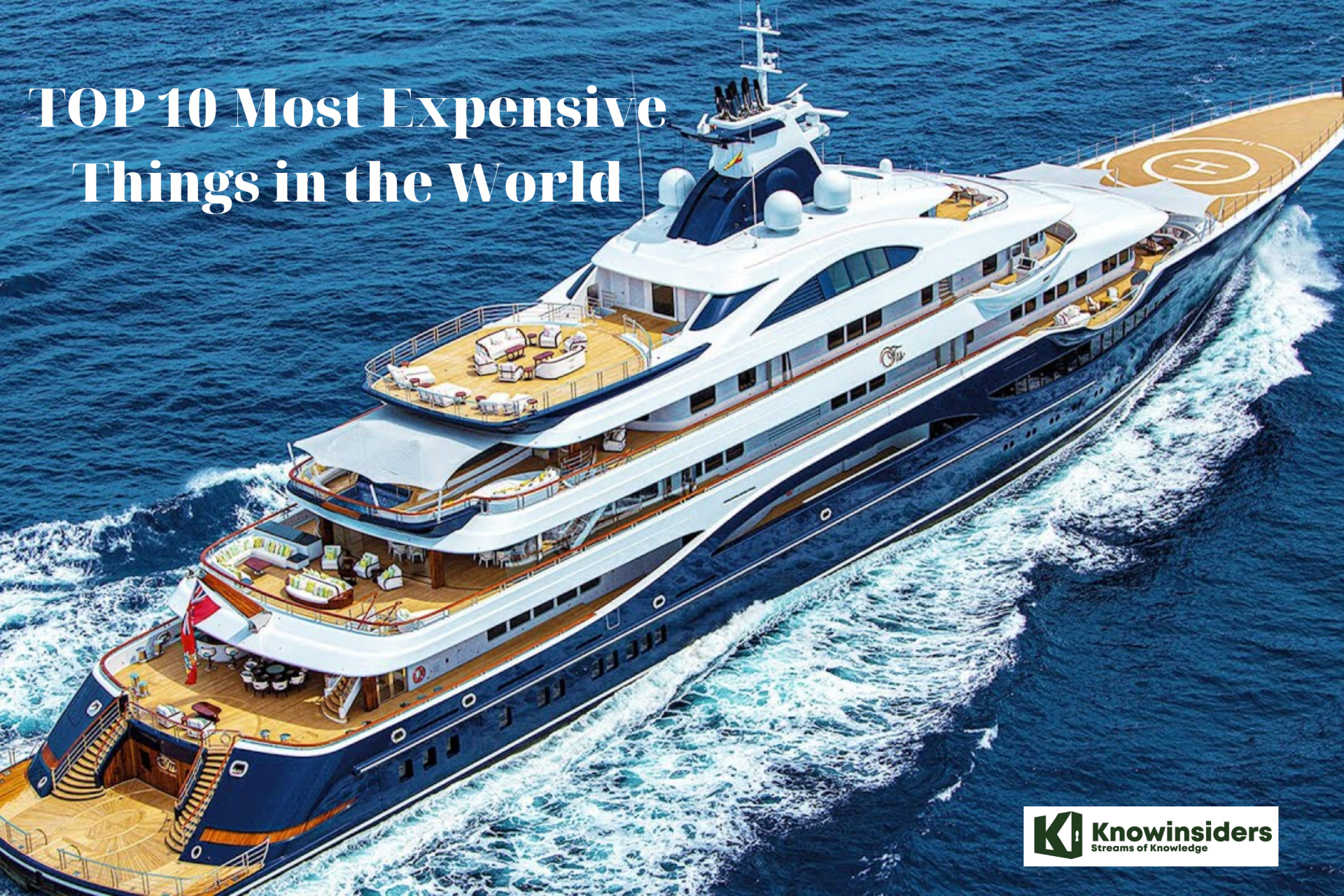 TOP 10 Most Expensive Things in the World TOP 10 Most Expensive Things in the World How much would you pay for a new car? A piece of art? a watch? Check out right below the most expensive things in the ... |


























